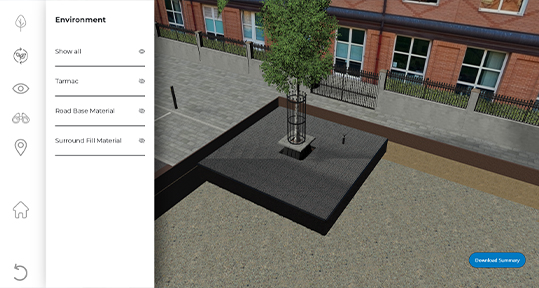A recent inventory of the trees in the London Borough of Southwark as managed by the tree officers has revealed an estimated economic value of the urban forest at an outstanding £165 million.
Tree officers are often recognised as ‘custodians of the urban forest’, managing the public tree estate for the common good.
The study, using i-Tree Eco, carried out by our good friends at Treeconomics, discovered that the trees owned and managed by the London borough stated that the figure quoted would be the cost to replace all of the established urban trees.
The valuable tool was also able to calculate that the trees managed by the council contribute to the removal of over 21 tonnes of air-borne pollutants, valued at £135,000 plus each year, and store over 57,000 tonnes of carbon, valued at over £14 million per year. They also divert over 35,000 cubic metres of stormwater away from the local sewers each year, which is worth an estimated £21,183 in avoided stormwater treatment costs. Furthermore, the benefits provided by these trees will grow as the trees do.
Healthy Tree’s is a topic that will be discussed by Kenton Rogers in our upcoming webinar on 4th September – Sign up here.

The study highlighted the many ecosystem services that trees provide. However, the benefits linked to health and well-being cannot currently be measured using i-Tree; so the annual benefits figure of almost £400,000 is certainly an underestimation.
By valuing the benefits that its trees are providing, Southwark Council now has an evidence base with which to mitigate for development impacts, inform land-use changes and, through planned intervention, avoid losses to its natural capital. The results of the study will certainly help the council to make informed management decisions about its green infrastructure.

The urban forest is dynamic and needs to be annually replenished through strategic new tree planting. As a follow up to the i-Tree Eco inventory project, Southwark commissioned Treeconomics to create a Tree Planting Opportunity Map, highlighting all areas with tree planting potential throughout the borough. The mapping exercise showed that if, over time, all actual plantable space were to become tree-covered, Southwark’s canopy cover could increase from 19.9% to 34.9%
Cllr Rebecca Lury, Cabinet Member for culture, leisure, equalities and communities, commented:
“In Southwark, we are committed to nurturing our existing 82,000 trees, and planting more. As an inner London borough, we value the vital role that our trees play in helping to improve air quality, as well the other multiple benefits they offer to local communities and neighbourhoods. We welcome Treeconomics and their expertise. This commission will help us to further quantify the environmental benefits that Southwark’s trees provide to local people and better inform our current and future management, of Southwark’s urban forest.”

GreenBlue is proud to highlight that many of the urban greening projects in Southwark have used the number one tree planting solution, including; One Blackfriars, Elephant Park, The Shard and Charter School to name a few. Our most successful so far a trial alongside TfL on Blackfriars Road by which a variety of tree planting media was used – the results speak for themselves – Soil Cells in the urban environment clearly contribute to mature canopy cover contributing to numerous health and monetary benefits as detailed in the Treeconomics report.



